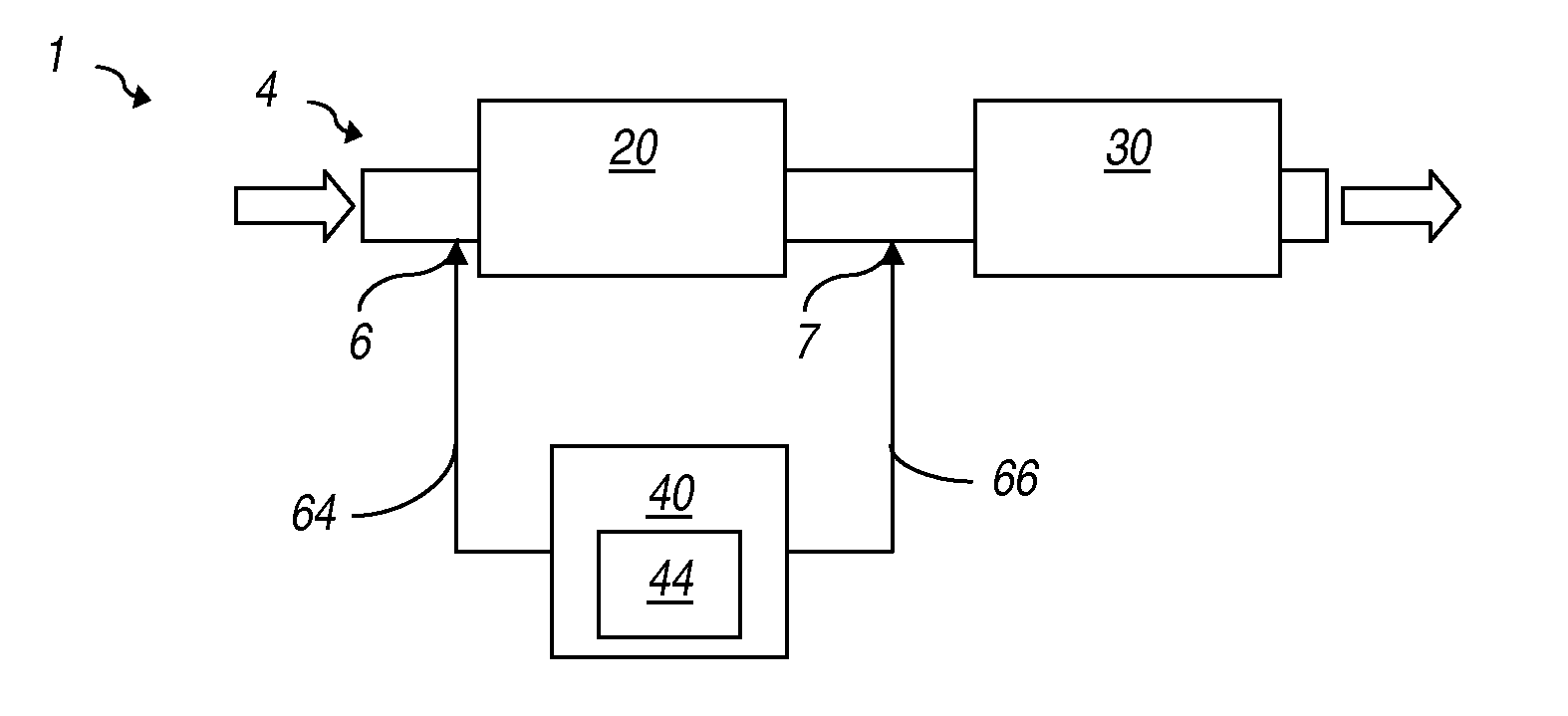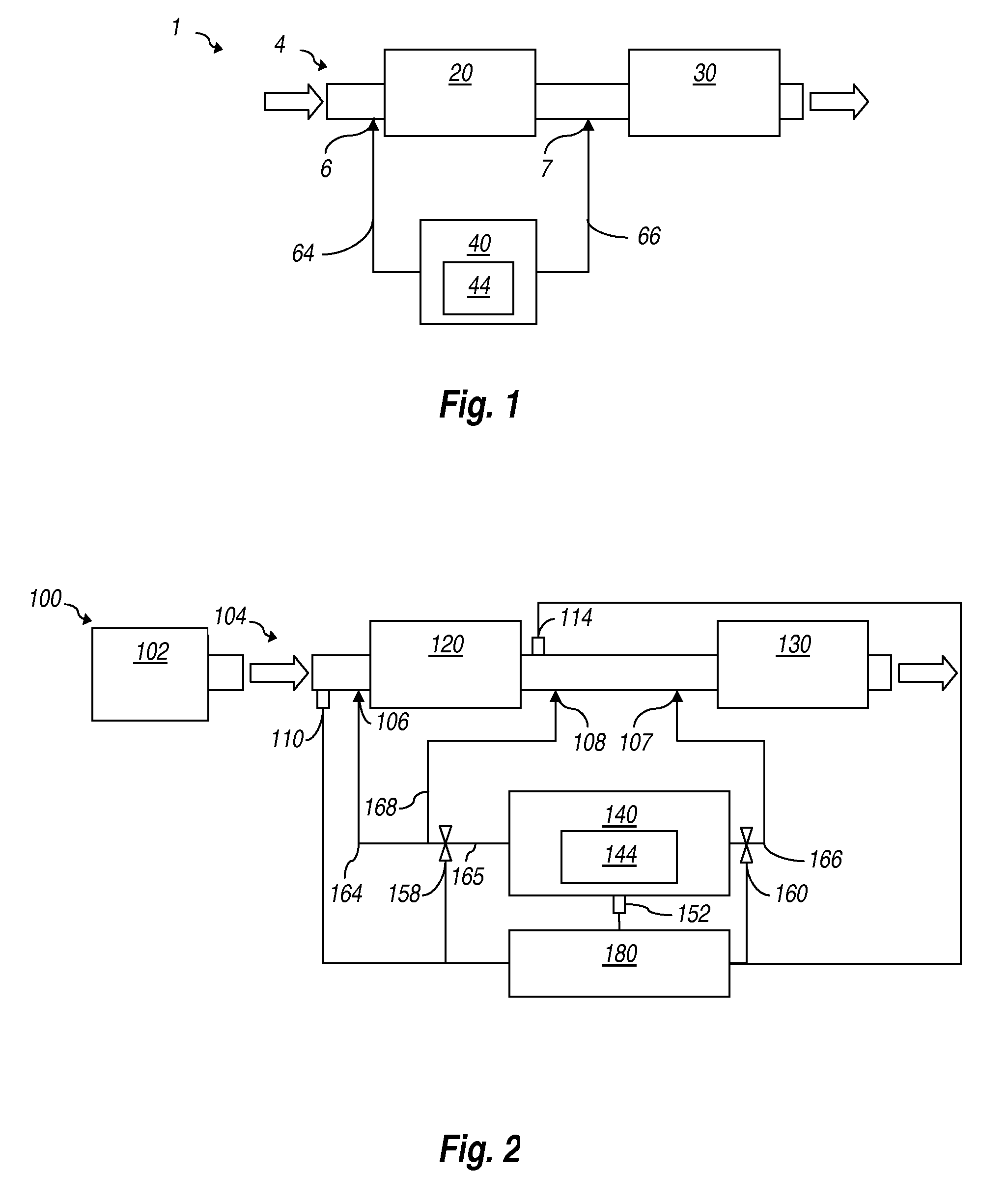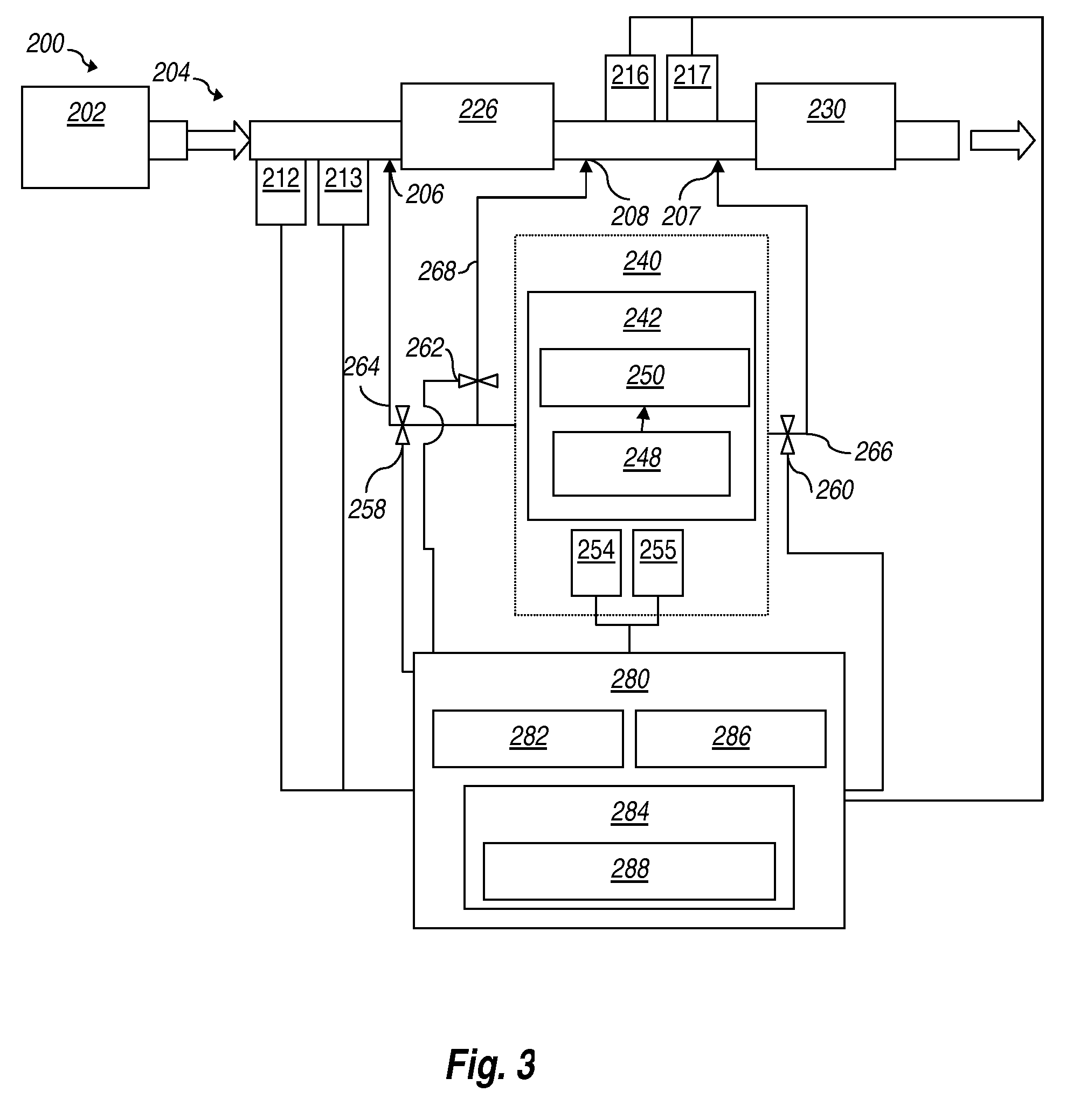System and method for treating exhaust gases
a technology of exhaust gas and system, applied in the field of exhaust system, can solve the problems of increased emissions of nosub>x/sub>, limited capacity of ammonia storage element, and increased ammonia emissions of ammonia based systems
- Summary
- Abstract
- Description
- Claims
- Application Information
AI Technical Summary
Problems solved by technology
Method used
Image
Examples
Embodiment Construction
[0017]Reducing the amount of ammonia that may exit an exhaust system as ammonia may be desirable in any exhaust system that uses ammonia to reduce emissions of NOx. Consequently, the systems and / or methods described herein may be used in an exhaust system that includes an ammonia salt, liquid ammonia, other ammonia source, or combinations thereof.
[0018]FIG. 1 is a diagrammatic illustration of an exhaust system 1 according to an example embodiment. The exhaust system 1 includes a conduit 4 that is in fluid communication with an ammonia-to-NOx catalyst 20 and an ammonia-SCR catalyst 30. A first inlet 6, with associated first fluid conduit 64, and a second inlet 7, with associated second fluid conduit 66, receive ammonia 44 from an ammonia source 40 and aid with delivering or directing ammonia toward conduit 4. As illustrated, the first inlet 6 may be located upstream of at least a portion of the ammonia-to-NOx catalyst 20 and the second inlet 7 may be located upstream of at least a po...
PUM
| Property | Measurement | Unit |
|---|---|---|
| temperature | aaaaa | aaaaa |
| temperature | aaaaa | aaaaa |
| temperature | aaaaa | aaaaa |
Abstract
Description
Claims
Application Information
 Login to View More
Login to View More - R&D
- Intellectual Property
- Life Sciences
- Materials
- Tech Scout
- Unparalleled Data Quality
- Higher Quality Content
- 60% Fewer Hallucinations
Browse by: Latest US Patents, China's latest patents, Technical Efficacy Thesaurus, Application Domain, Technology Topic, Popular Technical Reports.
© 2025 PatSnap. All rights reserved.Legal|Privacy policy|Modern Slavery Act Transparency Statement|Sitemap|About US| Contact US: help@patsnap.com



